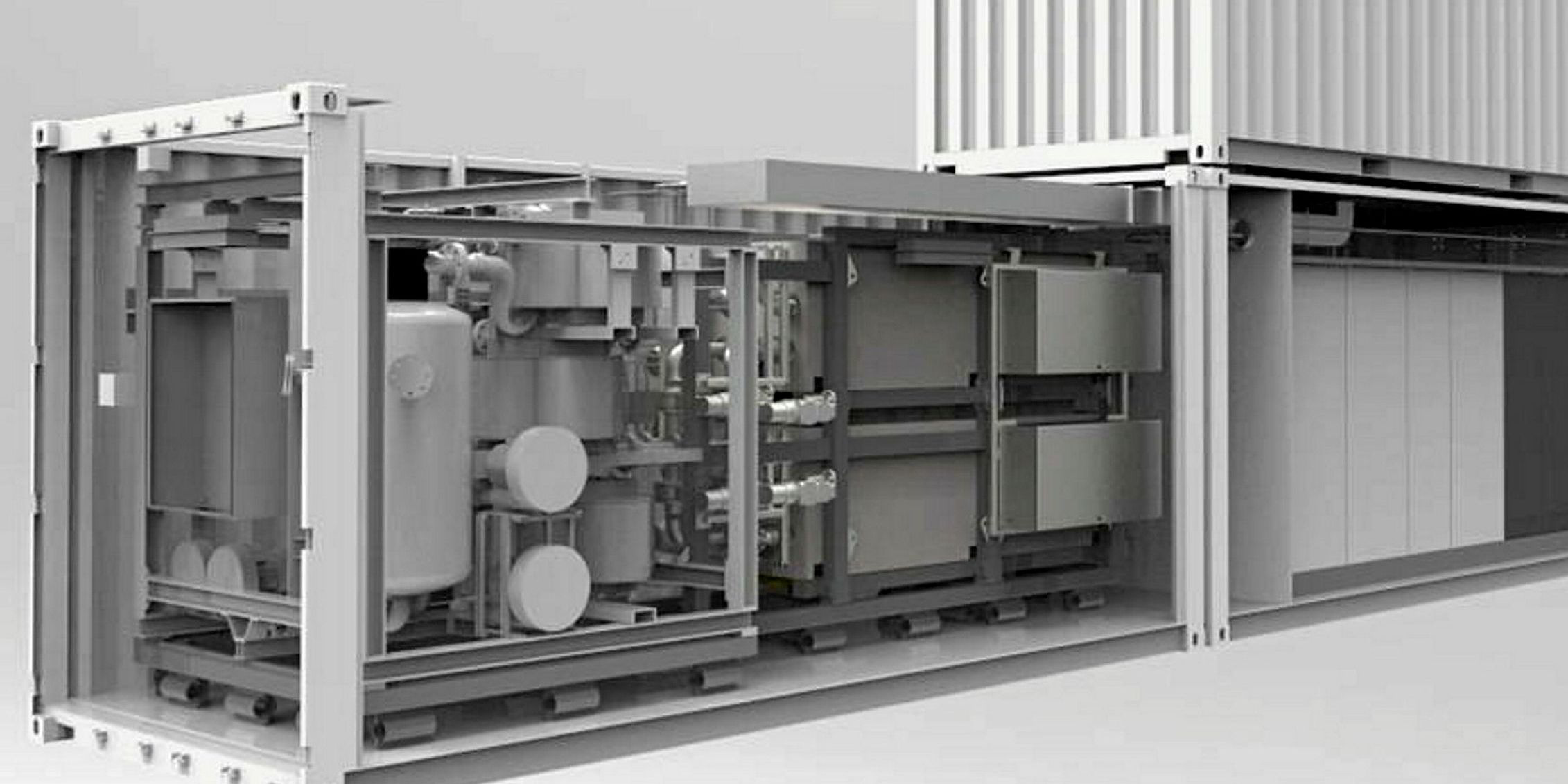Optimism surrounding fuel cells is growing. Viking Ocean Cruises intends to build what it claims will be the world’s first hydrogen-powered cruiseship, with fuel cells converting liquid hydrogen to electricity for propulsion and electric power onboard.
Similarly, Icelandic container line Samskip announced last month that it planned to build a pair of emission-free vessels using state-of-the-art hydrogen fuel cells for propulsion.
NYK Line’s lightweight Super Eco Ship 2050 design will be powered by hydrogen fuel cells (see video, below).
Royal Caribbean Cruises also wants fuel cell technology to feature on its Icon-class ships being constructed by Meyer Turku for delivery in 2022 and 2024.
Hydrogen versus LNG
On individual fuels, hySolutions general manager Heinrich Klingenberg says LNG supply should not be an issue given the growth of LNG infrastructure in large ports, especially in Europe and the US.
Although hydrogen in liquid form occupies less space than LNG, it must be kept very cold — at -253C.
Klingenberg discounts safety as an issue in storing hydrogen on passengerships, given that 10 years of use in public transport throughout Europe has not resulted in any serious incidents.

But all fuel cells that e4ships is using for vessels are high temperature 600C to 700C — either PEM or solid oxide — which should hasten their adoption because suitable fuels such as methanol and LNG are easier to use than hydrogen and supply infrastructure already exists.
Germany has been designing submarines with fuel cells for many years but they are low-temperature PEM units normally requiring hydrogen, which means higher safety requirements than methanol where refuelling is similar to using diesel.
Although deepsea projects are being developed, Klingenberg expects hydrogen fuel cells to be used primarily for inland waterway vessels because of the volume of energy required.
He cites e4ships’ Elektra project, a hydrogen fuel cell-powered tug to haul inland shipments from Berlin to Hamburg. Hydrogen will be supplied by trailers, with a refuelling station probably halfway between the two cities.
Comparison of NYK vessel particulars
| 2014-built car carrier | NYK Super Eco Ship 2050 | |
| Length | 199.9m | 199.9m |
| Width | 35.6m | 49.0m |
| Design draught | 9.0m | 9.0m |
| Air draught | 45.6m | 31.0m |
| Main energy source | Diesel engine (heavy fuel oil) | Fuel cells (hydrogen) |
| Renewable energy | Nil | Solar power |





